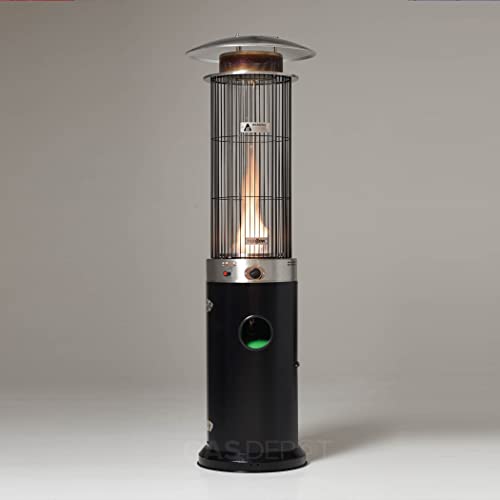Patio Heating Systems: A Comprehensive Guide
As outdoor living areas evolve into extensions of our homes, developing a comfy and inviting atmosphere is critical. One of the most effective ways to accomplish this convenience is by executing patio heating unit. These systems permit households and pals to enjoy their outdoor areas year-round, despite the chill of the evening air. This article will explore numerous patio heating unit available, their features, benefits, and crucial factors to consider for choosing the best one.
Kinds Of Patio Heating Systems
Patio heating systems can be found in various forms, each with its own special attributes. Below are some of the most common types:
| Type | Description | Pros | Cons |
|---|---|---|---|
| Electric Patio Heaters | These heaters run using electrical power and can be found in wall-mounted, portable, and freestanding models. | Easy to set up and use; instant heat; safe; low upkeep | Limited heat range; might increase electrical power bill |
| Gas Patio Heaters | Usually powered by propane or gas, gas patio heaters provide significant heat output and can cover big locations. | High heat output; can last longer than electric models; perfect for huge events | Needs gas supply; can be less portable; safety interest in gas leakages |
| Infrared Heaters | Infrared heaters give off thermal radiation that directly warms items and individuals rather than the surrounding air. | Efficient; immediate heat; minimal heat loss; eco-friendly options offered | Limited area of result; preliminary cost might be high |
| Fire Pits | Often made of stone or metal, fire pits supply heat and ambiance, producing a comfortable atmosphere. | Natural ambiance; versatile (cooking option); collect around for social interactions | Safety dangers with open flame; require wood or propane supply |
| Patio Umbrellas with Heaters | These are umbrellas fitted with built-in heating elements, perfect for shaded locations. | Practical; combines shade and heating; portable | Less efficient in windy conditions; minimal location; can be expensive |
Key Features to Consider
When selecting a patio heating unit, it is important to evaluate various features based on personal preferences, budget, and outdoor space requirements. Here are some aspects to consider:
- Heating Capacity: Measured in BTUs (British Thermal Units), this determines the heat output of the heater. Select a heater with adequate BTUs for your outdoor size.
- Fuel Type: Decide between electric, gas, or wood-burning options based upon convenience, schedule, and performance.
- Mobility: If mobility is important, try to find lightweight or wheeled models for simple transport.
- Maintenance: Consider the maintenance required for each type. Electric heaters typically require less maintenance than gas or wood options.
- Safety Features: Look for systems with safety cut-offs, protective screens, and materials that can endure outdoor conditions.
Benefits of Patio Heating Systems
Patio heating systems offer several benefits, allowing property owners to maximize the use of their outdoor living locations. Some advantages include:
- Extended Outdoor Use: Heaters permit more time invested outside, even throughout cooler seasons.
- Increased Comfort: Provide a warm and inviting environment for gatherings, parties, or quiet nights.
- Boosted Aesthetics: Many heater styles include a stylish touch to outdoor decoration.
- Increased Property Value: Homes with well-equipped outdoor areas may attract greater worth and appeal to prospective buyers.
- Versatile Options: With different design and styles offered, there is a heating service for each kind of outdoor setting.
Frequently Asked Questions About Patio Heating Systems
1. Just how much does it cost to operate a patio heater?
- Electric Models: This depends upon the local electrical energy rates and use time. Usually, running an electric heater can cost in between ₤ 0.10 to ₤ 0.50 per hour.
- Gas Models: Propane expenses differ, however a 20-pound tank usually lasts about 8-10 hours, costing around ₤ 20-₤ 30 to fill.
2. Stylish Outdoor Heaters to utilize?
The majority of modern patio heaters are developed with safety functions. Nevertheless, it's vital to follow safety procedures, such as sticking to clearances from combustible items, using on stable surface areas, and ensuring appropriate ventilation for gas designs.
3. Do patio heaters work in windy conditions?
The majority of patio heaters can provide heat in light winds, however strong gusts can reduce their efficiency and safety. For high-wind areas, think about more stable models or use wind shields.
4. Can I use a patio heater indoors?
Utilizing outdoor heaters inside your home is not recommended due to carbon monoxide risks, particularly with gas heaters. Always validate your heater's desired use standards before installation.
5. How do I maintain my patio heater?
Regular maintenance is important to make sure longevity and efficiency:
- For electric heaters, check and clean the heating element routinely.
- Gas heaters should have their gas lines checked for leaks and filters cleaned up.
- Fire pits ought to be cleaned up after usage and looked for any residue or ash buildup.
Patio heater play a crucial function in transforming outdoor spaces into comfortable and welcoming environments. With a range of options, each with unique benefits and functions, house owners can choose the best system based on their requirements, choices, and specific outdoor conditions. By purchasing a reliable patio heater, one can make the most of satisfaction of their outdoor space throughout the year. Whether hosting summer barbecues or cozying up on cool evenings, a warmed patio invites togetherness, relaxation, and satisfaction, making it an important addition to any home.

